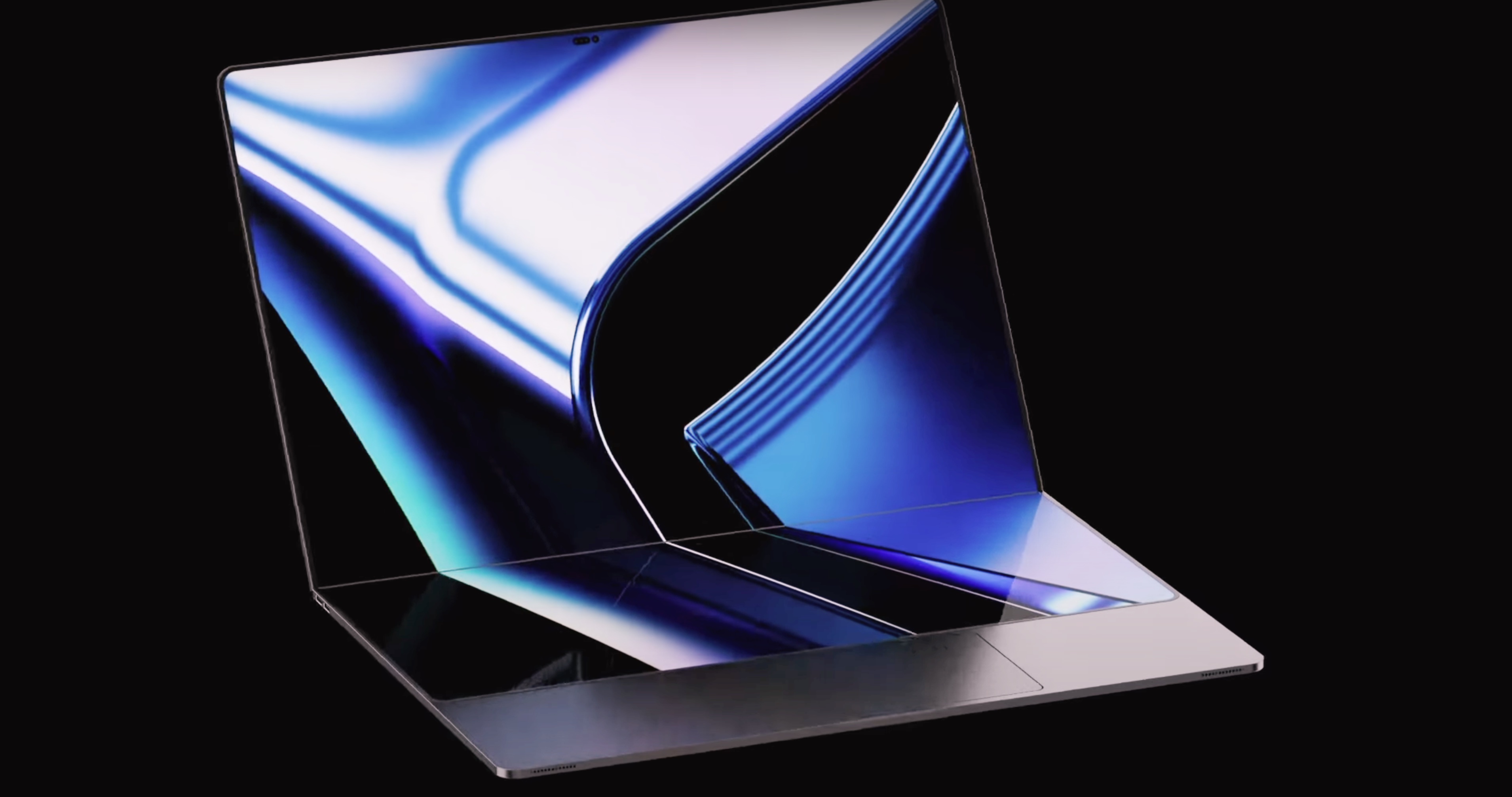Apple reportedly developing 20-inch foldable display for MacBooks
Future MacBooks could look very different

When Apple does something new, the world takes note. That’s why rumors from South Korea have us excited. Reportedly, Cupertino is developing a 20-inch foldable display in partnership with a South Korean partner.
While it could just be an experiment or patent exercise, Korean outfit The Elec is confident that this display, which apparently measures 20.25 inches unfolded and 15 inches when folded, will eventually be implemented into a product that's akin to a foldable MacBook.
Just don't expect to see this foldable display on a MacBook anytime soon. That's because Apple is allegedly focusing on getting all of its devices onto OLED displays before going down the foldable route. So when the rumored next-gen MacBook with M2 arrives, potentially next year, it may have an OLED display but don't expect any folding screen wizardry.
While the iPhone and Apple Watch have OLED displays, Apple has been slower on adopting such screens for other larger products. All iPad other than the 12.9-inch iPad Pro use LCD displays, with the latter tablet making use of mini-LED technology.
A transition to OLED screens will apparently start from 2024, with the iPads getting OLED tech. Then in 2025, MacBooks have been tipped to mover from LCD to OLED. And then, according to The Elec, the first Apple foldable will come in the form of a folding iPad in late 2025. However, despite all the rumors, there reportedly won't be a folding iPhone, aka the iPhone Flip.
With all this in mind, a foldable OLED MacBook isn’t expected to hit the market until 2026 or even 2027.
Why do Apple’s foldable devices need to be OLED?
It’s true that in the past foldable devices have used LCD, LED and micro-LED technology, but Apple’s decision to hold out for OLED viability on a potential MacBook is a shrewd one. While devices such as the Samsung Galaxy Z Flip 4 do employ OLED technology it is on a much smaller screen and big screen rollable efforts like the LG Signature OLED R are incredibly expensive (around $100,000).
Sign up to get the BEST of Tom's Guide direct to your inbox.
Get instant access to breaking news, the hottest reviews, great deals and helpful tips.
On top of the improved quality of the picture, OLED screens do not need a backlight so can be much thinner than other displays. And when implemented with technology such as ultra-thing glass, can make for a foldable screen that offer solid colors and contrast.
What could a foldable MacBook look like?
In many way this so-call foldable MacBook would almost be a new form-factor device entirely, much like the Surface Pro was for Microsoft when it was first revealed.
As such, we can expect it to work both as a laptop and tablet; in that when folded shut it could act like a large iPad, but when open would provide a form of laptop with one part of the display use to show macOS and the other to provide a virtual keyboard and trackpad or other control functions. Do bear in mind, this is just pure speculation, based on seeing the likes of the Lenovo ThinkPad X1 Fold.
But for Apple to take this approach it would likely need for folding display tech to have matured a little. Currently, the foldable phones available feature a prominent crease along the fold that can look intrusive, and that would likely need to be reduced when on such a large folding screen.
But in there here now, if you want a solid MacBook, then check out the MacBook Air M2. And for foldable devices, take a look at our best folding phones list.
Andy is a freelance writer with a passion for streaming and VPNs. Based in the U.K., he originally cut his teeth at Tom's Guide as a Trainee Writer before moving to cover all things tech and streaming at T3. Outside of work, his passions are movies, football (soccer) and Formula 1. He is also something of an amateur screenwriter having studied creative writing at university.
